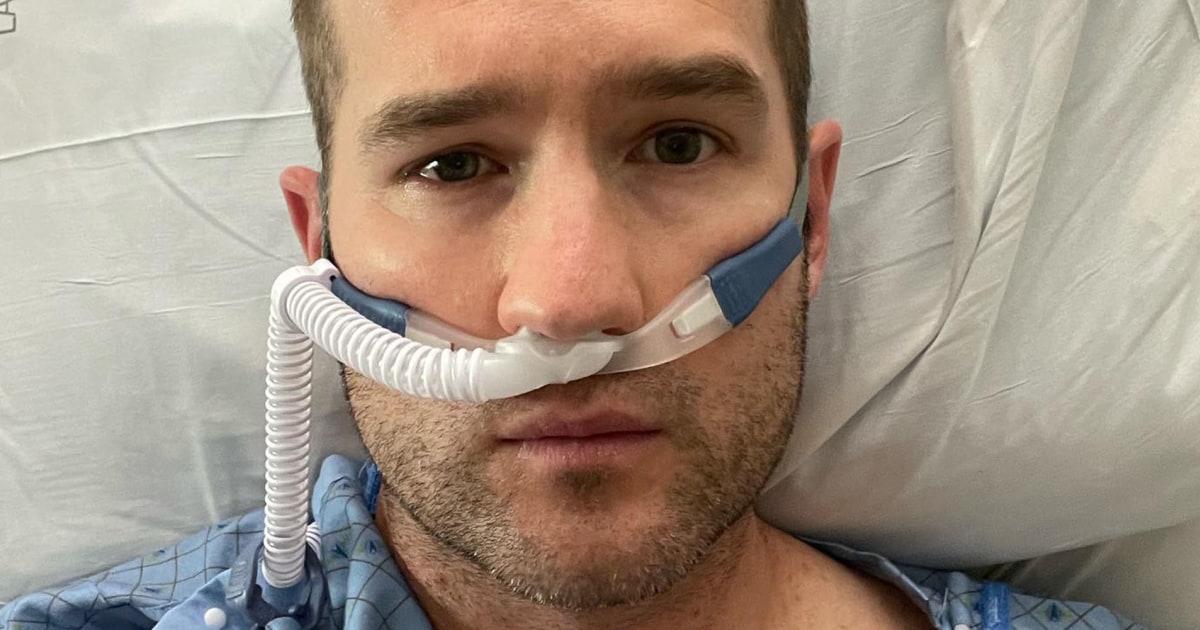After climbing his entire life, NBC News correspondent morgan chesky he had never heard of pulmonary edema at high altitude, until an incident he described as «absolutely terrifying» could have led to cardiac arrest.
“I could never have imagined that a trip to Bryce Canyon and Zion National Parks would end with oxygen in an ICU,” Chesky said Thursday while discussing the ordeal on “TODAY.”
It was the journalist’s first time in an ambulance and in the intensive care unit. He had no idea what was wrong, he wrote on Instagram in April when he first shared the details of the emergency.
The hiking trip was to celebrate his 37th birthday. On the show, Chesky recalled «feeling bad» while hiking with his uncle Eric, who in turn noticed his nephew moving a little slower than normal when they started hiking in Bryce Canyon National Park, Utah. .
«That’s why I continued to watch you like a hawk for the rest of the trip,» said Eric Chesky.
Hiking in Zion National Park, Utah, the next day, Morgan Chesky felt even worse, groggy and weak, with a racing pulse, and he had to stop frequently to catch his breath. The symptoms were especially terrifying because his father had similar warning signs before she died of a heart attack at age 48.
Sensing he was in trouble, his uncle grabbed his backpack, helped him out of the way, and drove him to an urgent care clinic an hour away. Tests showed that his blood oxygen saturation levels were 58%, half of what they should be.
An ambulance took the journalist to Cedar City Hospital in Utah on April 23, where Dr. Jarid Gray discovered that his lungs were filling with fluid and diagnosed him high altitude pulmonary edema — a severe form of altitude sickness, according to the National Library of Medicine.
«The simplest way to think of it is that all the capillaries in the lungs started to leak plasma into the small space they occupy, making it harder for oxygen to get through,» Gray said.
If left untreated, a person can pass out from lack of oxygen or go into cardiac arrest, the doctor noted. Half of patients who don’t get help on time die, the National Library of Medicine noted.
That’s what happened to John Magness, 58, an accomplished hiker who scaled Mount Aconcagua in Argentina in February. Hours later, he passed away from a HAPE-induced cardiac arrest, his family said.
“He was a very physically fit person and he had never had this type of struggle on his other climbs,” said his daughter Chelsea Shelburne.
“I think, really, it can happen to anyone. Plan ahead and prepare as best you can for emergency scenarios.”
Risk factors and symptoms
Doctors don’t know why the disease affects some people and not others.
HAPE can occur at altitudes as low as 6,500 feet, with risk factors including a fast rate of ascent, using sleeping medications, eating too much salt, being in cold weather and exerting yourself, according to the National Library of Medicine. Men appear to be more at risk than women, she added.
Symptoms include fatigue, shortness of breath, chest pain, and a dry cough on exertion.
The main treatment is for the patient to go to a lower altitude with as little effort as possible until symptoms improve, the National Library of Medicine noted. Supplemental oxygen and certain medications can also help.
After receiving medical attention and returning to a lower elevation, Morgan Chesky has recovered and is grateful to his uncle for coming home.
“Lots of love for having my back out there,” he told her.

